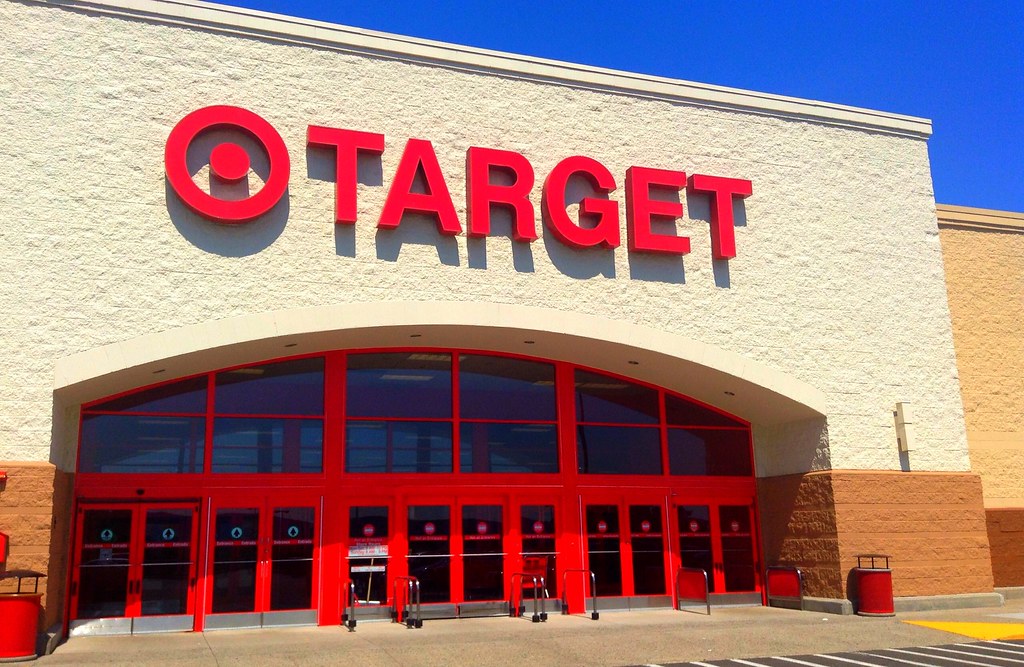Tuesday Talk: More Market Stimulation
Positive signals on the stimulus bill in the Senate amidst positive U.S. manufacturing data helped drive the market higher on Monday, overriding some of the corrective actions of last week. Data for U.S. state tax revenues show that somes states recorded better than expected revenues for the period April-December 2020, indicating that economic activity during the pandemic (in some areas of the country)has been better than anticipated. Yesterday, the S&P 500 closed at 3,902, up 2.38%, the Dow closed at 31,535, up 1.95% and the Nasdaq closed at 13,589 up 3.01%. A strong kick-off to the week for sure. Currently, futures for all 3 indices are light red.

TalkMarkets contributor Jharonne Martis looks at retail sales in Q4 2020 U.S. Retail Scorecard – Update, March 1 and finds that "Of the 149 companies in the index that have reported earnings to date, 69% have reported earnings above analyst expectations, 3% matched and 28% reported earnings below analyst expectations. The Q4 2020 blended earnings growth estimate is -10.7%. The Q4 2020 blended revenue growth estimate is 7.7%. Sixty-nine percent have reported revenue above analyst expectations, and 31% reported revenue below analyst expectations."
Both Target (TGT) and Kohls (KSS) come out as companies to watch in the coming quarters. Martis includes several charts on the 2020Q4 retail sector results. Below is the chart for 14 retailers for same store sales and earnings, showing expected results and actuals for those companies who have reported.

Elsewhere contributor Yohay Elam who has been concerned about the amount of money the Fed has been putting into circulation for some time looks ahead to what we might expect to hear from Jerome Powell later in the week in his article Powell Preview: Three Scenarios For The Fed To Defuse The Bond Bonfire, Market Implications.
"King Dollar has since edged lower as markets await another speech by Powell – his last public appearance before the Fed’s “blackout period” leading to its rate decision. How will he shape expectations?
How will markets react? Here are three scenarios:
1) Same-same – dollar resumes gains
Powell may stick to his previous script – saying that any inflation will likely be transitory and that there are still ten million Americans out of work. More importantly for markets, if he says that higher yields are a healthy sign of better growth prospects, he would give bond vigilantes a green light for another sell-off.
In this case, higher returns on US debt would sink stocks, as rich multiples on earnings would seem less attractive, while the dollar would become more appealing with higher Treasury yields.
2) Watching closely – soothing stocks, but not the dollar
The Reserve Bank of Australia has already intervened in markets and scooped up the debt of the land down under in order to lower yields. The European Central Bank and the Bank of Japan have settled for warnings, but they seem itching to act.
If the Fed joins the fray – but without hinting at imminent action – it would show that the Powell Put is alive and kicking. The saying that the “Fed works for Wall Street” would be brushed up and investors would be able to buy stocks given assurances that the bank would not tolerate a crash.
However, for the dollar, it would be insufficient. The Fed would still lag behind its peers in pushing down long-term borrowing costs – “losing” the currency war. The world’s reserve currency would be able to resume its ascent – which would make sense amid America’s strong recovery.
3) More QE? A Double-edge sword
If Powell is deeply concerned with the potential of another crash in stocks – or higher borrowing costs that would derail the recovery – he could hint of going the Australian way and buying more bonds. That would top up the whopping $120 billion / month already in place.
In that case, clues of printing dollars would sink the greenback. Contrary to responses in the euro and the pound to creating new currency out of thin air in 2020 – surprising rises – more Fed printing is adverse for the greenback.
How will stocks react? While markets tend to cheer more money, an initial upward swing on Wall Street could be followed by fresh concerns of inflation. If investors see Powell as going too far with QE, they could also quickly change their mind and see the bank forced to reverse course."

In a TalkMarkets exclusive Global Price-Earnings Ratio-Pretty Heady Stuff, contributor Jim Boswell gives budding investors a short primer on Price to Earnings ratios. Of interest are his current tabulations of P/E ratios by country and by business sector in the U.S.
"The following list shows the international associations' price-earnings ratio based upon their business companies: India 24.5, United States 21.3, Middle East 17.0, Europe 15.2, Other Asia 13.6, Americas 11.0, China 11.0, Africa 10.0, Hong Kong, separately 10.6."
Using a higher P/E ratio as an indicator of strength, Boswell invokes Warren Buffett (in his recent letter to shareholders) "He said he would never bet against the United States. He is absolutely right straight on. Why would you bet against the United States with the above kind of numbers."
Tyler Durden writing this morning in Mortgage Market Turmoil Sparks Housing Boom Concerns looks at how the uptick in interest rates is affecting the home mortgage market.
"The housing boom unleashed by the Federal Reserve during the pandemic was built on historically low mortgage rates (thanks Powell), low inventory, city-dwellers moving to rural areas, and remote-work phenomenon. In all, housing prices in 20 U.S. cities surged in December at the fastest pace since 2014 as mortgage rates fell to record lows. But a new rate regime is in town, one where bond traders are pricing in inflation as they believe the vaccine rollout and stimulus will lead to a sizzling economic recovery, one that could force the Fed to hike rates earlier (and more aggressively) than expected...
Lewis Sogge, a senior loan officer at Freedom Mortgage, said the sudden jump in mortgage rates caught him "off-guard." He anticipated the 30-year fixed loan rate to hover at January levels (2.65%) through the first half of 2021.
Since that's not the case anymore, Sogge said his refinancing pipeline is already "drying up." He warned the longer the 30-year fixed loan rate hovered above 3% - there was potential for more "upside in rates." ...Greg McBride, the chief financial analyst at Bankrate.com, said a rising rate environment could "downshift" the market from "red hot to merely sizzling." "
Alarm sounded Tyler, but going from "red hot to sizzling" is not a sign for panic, yet.
In our look at where to invest this week Sweta Killa takes a look at the top 5 stocks in the Amplify Transformational Data Sharing ETF, which Killa says was the best performing ETF for the month of February. In an article aptly titled 5 Best-Performing Stocks Of The Top ETF Of February Killa digs out the below picks:
"Best-Performing Stocks of BLOK
Canaan Inc. Sponsored ADR: (CAN) This Canada-based company provides specialty software. The company develops supercomputing chips for digital blockchain computing equipment, as well as supplies computer software and hardware products. The stock occupies the fifth position in the fund’s basket with 4.6% allocation. It has gained about 194.4% in a month.
Riot Blockchain Inc. (RIOT): This Colorado-based company is focused on building, supporting, and operating Blockchain technologies ecosystem. It is involved in digital currency mining operation, which utilizes specialized computers that generate digital currency primarily bitcoin. It has gained 103.6% in a month. The stock takes the seventh spot in BLOK at 3.7% share. It has a Zacks Rank #2 (Buy) and a Momentum Score of A.
Opera Limited Sponsored ADR (OPRA): This Norway-based company provides mobile and PC web browsers. It makes up for 1.3% allocation in the fund basket. Opera has also delivered incredible returns of about 44% in a month. The stock has a Zacks Rank #3 (Hold) and a Momentum Score of B.
Marathon Patent Group Inc. (MARA): This is a patent and patent rights acquisition and licensing company based in Virginia. The stock takes the eighth spot in the fund’s basket with 3.4% of the assets. It has gained 32.6% in a month. HEXO has a Zacks Rank #3 and a Momentum Score of A.
Ebang International Holdings Inc.: (EBON) This application-specific integrated circuit ASIC chip design company as well as manufacturer of Bitcoin mining machines is based in China. The stock is up about 31% in a month and accounts for 2.2% of the total assets."
See the full article for more details and information on the (BLOK) ETF. As always, buyer beware.

January and February had the markets off to a good start, though the end of last month found a few bears sniffing around. We will have to wait and see what happens in Washington and what the upcoming jobs report will bring.
In "Great Expectations" (Charles Dickens) you can find this line: “It was one of those March days when the sun shines hot and the wind blows cold: when it is summer in the light, and winter in the shade.”
I think we may have many market days like this, this month.
Have a good week.





Enjoyed the piece by @[Jim Boswell](user:38046), thanks for sharing the link.